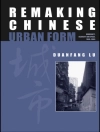Insulating materials remain as important as ever. The range of available kinds is constantly increasing. Thanks to their heat-insulating properties, they help save heating and cooling energy and reduce CO2 emissions.
Detail Practice: Insulating Materials offers a comprehensive catalogue of insulating materials for use in construction. Notes on the individual types of insulating materials provide information on the raw materials they contain as well as their typical attributes, areas of application, and delivery forms. Tables with physical characteristic values and indications regarding health and environmental safety enable the reader to compare different insulating materials.
An overview of European regulations and norms pertaining to insulating materials, with notes on product labeling and certification, helps with the process of planning and publishing invitations to tender. Criteria are presented for selecting the appropriate insulating material for the job. In addition, a nuanced description of the environmental effects of insulating materials opens up an enormous optimization potential for using them sustainably.
Spis treści
Introduction: Functions and requirements of insulating materials; Classification and decription of insulating materials (organic/inorganic); Applications: fixings, insulation of wall, ceiling, roof, moisture control, fire protection, moisture control, ecological aspects, sustainability, recycling, bibliography, index.
O autorze
Dipl.-Ing. (FH) Margit Pfundstein, Produktbeauftragte BASF Europa, Ludwigshafen
Dipl.-Ing. Alexander Rudolphi, Geschäftsführer der Gesellschaft für Ökologische Bautechnik Berlin mb H
Dr.-Ing. Martin H. Spitzner M.Sc., Abteilungsleiter Bauphysik und Bauteile, [Head of Department, Building physics and building components], Forschungsinstitut für Wärmeschutz e. V. München, Gräfelfing bei München
Dr. rer. nat. Roland Gellert M.Sc., Geschäftsführer des Forschungsinstituts für Wärmeschutz e. V. München, Gräfelfing bei München












